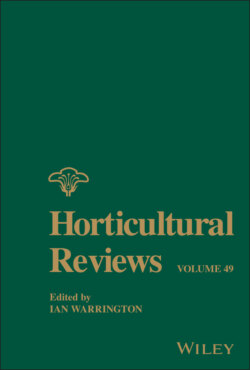Читать книгу Horticultural Reviews, Volume 49 - Группа авторов - Страница 28
I. Genetic Variation in Hydrangea
ОглавлениеGenetic variation is an important metric for plant breeding and conservation alike. For plant breeders, genetic variation is the raw material to be utilized in order to make gains from selection. In conservation, genetic variability is likewise extremely important, as a species that possesses higher genetic variability has an increased ability to adapt to changing environmental conditions and selective pressures.
Natural variation has been increasingly utilized for breeding and genetic studies (Xue et al. 2008; Alonso‐Blanco et al. 2009; Weigel 2012). A major benefit of using natural variation in studying plant genetics or plant improvement is that natural intraspecific variation can exceed (or greatly differ from) that found in cultivated genepools. For example, initial horticultural characterizations of wild collected oakleaf hydrangea seedlings revealed variation in the species exceeding that which is found among cultivars for traits such as leafspot tolerance and resistance to deacclimation (Sherwood et al. 2021), and further characterization is expected to reveal further novel variation for additional traits. This can be applied to hydrangea breeding by selectively incorporating wild germplasm into a breeding program in addition to existing cultivars.
Although genetic variation between species of Hydrangea and within H. macrophylla, H. paniculata, and H. febrifuga (Rinehart et al. 2006, 2010; Reed and Rinehart 2007, 2009) has been determined, no comprehensive studies have previously been undertaken for H. quercifolia. Additionally, none of these studies examined the full range of variation in the species, but rather focused on the available germplasm in the form of cultivars and limited numbers of wild accessions. Studies of species‐wide genetic diversity and population structure in H. quercifolia are currently underway, and suggest that considerable diversity exists in the species, with unique genetics existing in different parts of the species range (Sherwood et al. 2020) which also correspond to unique phenotypic diversity (manuscript in preparation).
A recent high‐resolution study of population structure of a disjunct and geographically isolated island population of H. luteovenosa revealed extremely low levels of genetic diversity in the population (Choi et al. 2017). Using five SSR markers, it was determined that only two distinct genotypes exist on Jeju Island, South Korea, one of which dominates the small population (251 out of 285 samples) likely due to clonal reproduction. This indicates that an extremely limited extent of diversity exists in the three Japanese populations of the species occurring on the disjunct Jeju Island. The fact that one of the two genotypes is found in 88% of the population indicates that the population has an extremely limited ability to adapt to changing conditions, and as such is at a higher risk of extirpation and is more susceptible to inbreeding than the Japanese populations.
Population genetic structure and phylogeography of H. platyarguta (syn. Platycrater arguta) has also been studied across the extent of its natural range in eastern China and southern Japan (Qiu et al. 2009). Using chloroplast DNA sequences, this study found two genetically and geographically distinct groups which correspond to var. sinensis and var. arguta. Overall, it was shown that H. platyarguta has high genetic variation.
